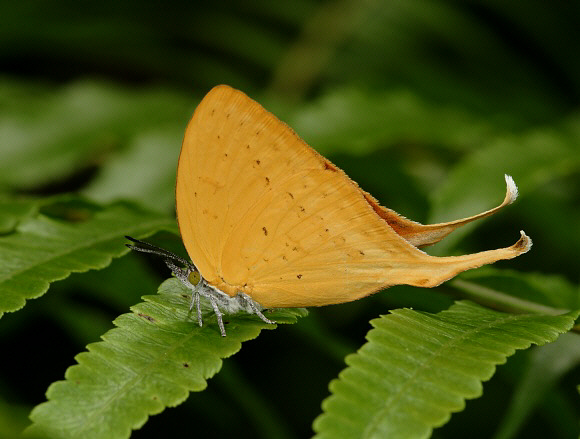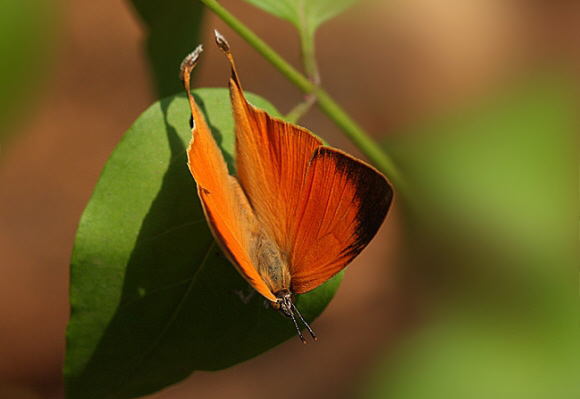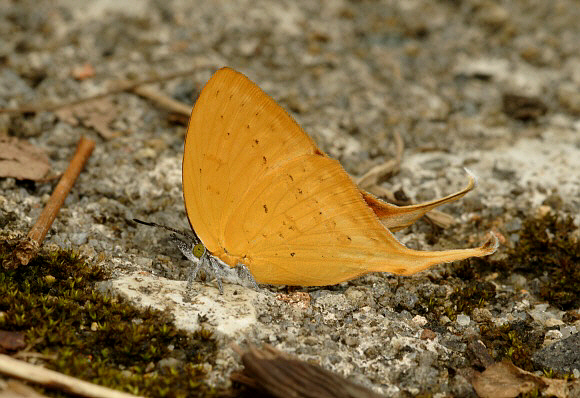
Introduction
The genus Loxura comprises of 2 very similar species atymnus and cassiopeia, both restricted to the Oriental region. Loxura atymnus is found in India, Sri Lanka, Myanmar, Thailand, Vietnam, Laos, southern China, Taiwan, the Philippines, peninsular Malaysia, Sumatra, Sarawak, Brunei, Sabah, Kalimantan, Java, Sulawesi and Bali.
Habitats
This species can be found in primary rainforest but is more frequently associated with disturbed or secondary forest or plantations, where is can be seen in open sunny areas.

Lifecycle
The egg is dome-shaped with numerous tiny shallow depressions, and purplish-white in colour. It is laid singly at the base of young shoots of the foodplants which include Dioscorea (Dioscoreaceae), Smilax (Smilacaceae) and Solanum (Solanaceae).
The caterpillar is slug-shaped, shiny olive green, with whitish striations along the length of the back. There is a reddish suffusion along the lower middle abdomen and along the middle of the back. It feeds openly on the fleshy shoots but is extremely well camouflaged. Like almost all Lycaenidae larvae it possesses a Newcomer’s gland on the back, near the tail, which secretes a sugary substance which is “milked” by ants. The ants, by their presence offer in return a degree of protection against predators and parasitoids. The chrysalis is attached vertically to a stem of the foodplant and bears a remarkable resemblance to a partly opened leaf bud. The abdomen is bright leaf-green, with a broad band of marbled brown along the back, either side of the thorax, and around the edges of the wing cases.

Adult behaviour
The butterfly is usually encountered singly, either basking with wings held half-open on foliage, or sitting on leaves close to the ground. I have also observed males imbibing water from wet rocks at the edge of rivers, and have watched them expel water from the anus onto dry rocks to dissolve minerals, which they then imbibe.
